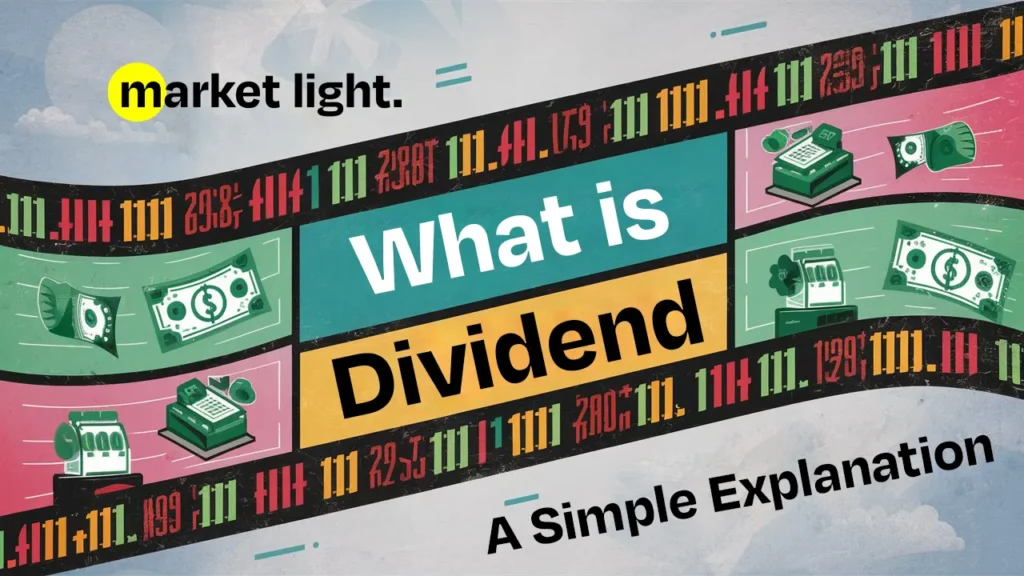Hello, readers! Today, we’re going to learn the concept of “dividend.” it might sound complex, , but don’t worry— Marketlight here to help you understand it in a simple way. Let’s dive in!
Imagine You Own a Chaat Stand
Think about a chaat stand. You and your friends decide to start one together. You all contribute in some money to buy ingredients like potatoes, chutneys, and papdis. After a busy day of selling chaat, you make some money!
Now, you have a decision to make. What should you do with the money you’ve earned? Here are a few choices:
- Save It: Keep the money to buy more ingredients for next time.
- Spend It: Perhaps buy some nice treats or toys for everyone.
- Share It: Divide the money and give everyone their fair share.
When you decide to share the money, that’s similar to what a dividend is!
What is a Dividend?
In the business world, people can own parts of large companies, much like you own part of the chaat stand. These parts are called “shares.” When a company makes money, they have a few options for what to do with it, just like you did with the chaat stand money. One of those options is to share the money with the shareholders. This shared money is called a dividend.
How Does It Work?
Let’s break it down further:
- Company Makes Money: A company sells products or services and earns revenue.
- Decides to Share: The company decides to distribute some of the earnings to its shareholders.
- Dividends Paid: Each shareholder receives a portion of the earnings based on how many shares they own.
For example, if you owned 2 out of 10 shares of the chaat stand, and you decided to share ₹100, you would get ₹20. That ₹20 is your dividend!
Why Do Companies Pay Dividends?
- Say Thank You: It’s a way to thank investors for putting their money into the company.
- Keep Shareholders Happy: Happy shareholders are more likely to keep their shares and maybe even buy more.
- Show Success: Paying dividends can signal that the company is doing well financially.
Important Dates: Ex-Dividend Date and Record Date
When it comes to dividends, there are two key dates you need to know: the Ex-Dividend Date and the Record Date.
- Ex-Dividend Date: This is the cutoff date. If you buy a share on or after this date, you will not receive the next dividend payment. It’s like a deadline. Imagine you need to tell your friends by Thursday if you want to join the chaat stand; otherwise, you won’t get a share of the money earned that week.
- Record Date: This is the date when the company reviews its records to see who owns the shares. If your name is on the list on this date, you will receive the dividend. It’s like making a list of all the friends who helped you with the chaat stand to decide who gets to share the earnings.
Example
Let’s say your chaat stand decides to give out dividends, and here’s the timeline:
- Ex-Dividend Date: 10th August
- Record Date: 12th August
- Dividend Payment Date: 15th August
If you own shares before the 10th of August, you will be on the list by the 12th and will receive your dividend on the 15th. If you buy shares on or after the 10th of August, you will not receive the dividend this time.
In Summary
A dividend is a way for companies to share their profits with their shareholders. It’s like splitting up the money you make from your chaat stand with your friends who helped you run it. To receive your share, you need to own the shares before the ex-dividend date and be on the company’s list by the record date.
I hope this explanation makes the concept of dividends clear and easy to understand. Learning about finance and how money works can be both fun and incredibly useful. Keep asking questions and stay curious!
Happy investing!

